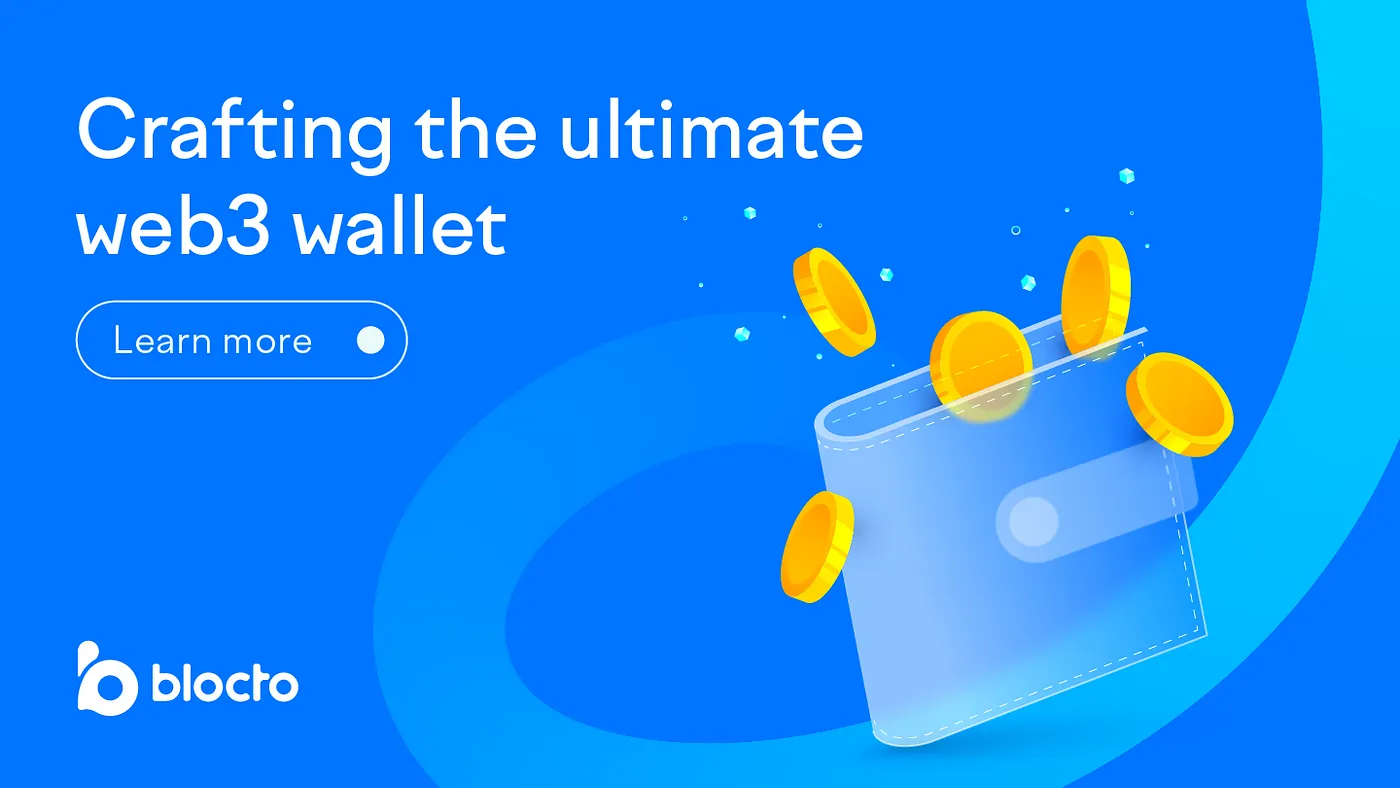
Web3 is a rapidly developing technology with numerous speculations surrounding the future direction of its ecosystem. Undeniably, this innovation is poised to disrupt various sectors, including finance, governance, entertainment, and social networking. As Web3 continues to permeate mainstream consciousness, it is anticipated that within a decade, it will become an integral part of the daily lives of average users.
As a fundamental component of the Web3 experience, wallets are poised to assume a significant role in people’s lives. However, the current state of Web3 wallet functionality leaves much to be desired, as it is not yet optimized for daily use by average users.
In this article, I will share several key features that a Web3 wallet must possess to cater to the mass market. While some of these elements have already been implemented and are steadily gaining traction, others remain in infant stages of development.
Decentralized identity
The term “Web3 wallet” is an understatement of its true functionality. A Web3 wallet not only stores your digital assets, such as cryptocurrencies and NFTs, but also serves as your identity in the Web3 universe.
This decentralized identity (DID) stems from two primary sources: an on-chain representation of your real-world identity and your blockchain-native identity. While significant effort has been dedicated to mapping users’ real-world identities onto the blockchain, there has been limited progress in representing users’ blockchain-native identities.
Real-world DIDs are typically integrated into the Web3 realm by storing encrypted, verified ID documents on-chain. These documents undergo verification by a trusted authority, allowing users to decrypt and share them with other relevant parties for expedited identity verification in the future. The key advantage of this approach is the elimination of repetitive KYC processes that users would otherwise have to undergo with multiple parties, such as banks, on numerous occasions.
In addition to your real-world identity, your on-chain transaction history and possessions form another aspect of your decentralized identity. Often, your blockchain-native identity provides a more comprehensive portrayal of who you are, revealing your actions, purchasing preferences, risk profile, and much more. This information can also lay the groundwork for your on-chain credit score.
Numerous dApps have begun targeting users based on their on-chain transaction history. Some projects issue Soul-Bound Tokens (SBTs) to users as a representation of their on-chain achievements. However, a systematic method for obtaining a holistic view of a user’s blockchain-native identity has yet to be developed.
Account abstraction
Since your Web3 wallet is your identity in the Web3 world, it’s essential to maintain its security and longevity. Presently, most Web3 wallets rely on a public-private key pair, binding your identity to the private key. Losing access to this key or inadvertently disclosing it to malicious actors would result in permanent loss of access to your identity.
By incorporating account abstraction (EIP4337 on Ethereum, and natively supported on some blockchains like Aptos, Flow, and StarNet), you can potentially preserve your identity even if your private keys are lost or compromised. This process involves rotating the lost or leaked key out of your account and adding a new, secure key.
In addition to key rotation, account abstraction enables other flexible features such as fee subsidization. For a more in-depth exploration of account abstraction, consider reading this informative article.
Multiple-factor key management
Various scenarios warrant multiple approvals instead of a single one when executing blockchain transactions. Individual users might require the added security of obtaining approval from N different devices, while corporations or DAOs might need X approvals out of Y council or board members before executing a transaction.
Several techniques and strategies can achieve this M-of-N multi-factor signature scheme: multi-party computation (MPC) involves collaborating multiple private keys to generate a valid signature, while multi-sig wallets directly register multiple keys to the account, requiring multiple signatures for transaction verification.
Regardless of the chosen strategy, multi-factor key management has been rapidly gaining popularity as it caters to the increasing demand for heightened security standards in the blockchain ecosystem.
Reasonable touch of centralization
While the blockchain industry is founded on the principle of decentralization, achieving complete decentralization may not be practical for the everyday usage of average users.
Certain aspects of Web3 wallets should retain their decentralized nature, such as users’ self-sovereignty over their identities. However, some features can benefit from a degree of centralization, like transaction fees. Web3 wallets should always adhere to users’ wills when approving transactions but should also offer a more convenient, partially centralized, payment method instead of requiring users to hold native blockchain coins themselves.
Increasingly, dApps are adopting a hybrid decentralization model, maintaining decentralized components that require trust, such as assets, collectibles, and authorizations, while incorporating centralized elements to enhance efficiency and user experience. This balanced approach caters to the unique requirements of users, ensuring both security and practicality in the Web3 ecosystem.
Chain-agnostic and layer-agnostic experience
Interoperability is crucial for the ultimate Web3 wallet. Chain-agnostic experiences will enable users to interact seamlessly with various blockchain networks without being restricted to a single platform. By supporting cross-chain bridges, blockchain-agnostic protocols, and other interoperability solutions, Web3 wallets can foster a more inclusive and connected ecosystem, allowing users to benefit from the unique advantages of different blockchain networks.
Layer-agnostic experiences will further enhance interoperability in Web3 wallets by enabling seamless communication between various layers of blockchain technology. This will allow for the integration of different consensus mechanisms, smart contract languages, and scaling solutions, making it easier for users to manage and interact with their assets across multiple platforms while benefiting from the strengths of each layer.
Ultimately, users are drawn to the applications empowered by Web3, whether DeFi protocols, games, or social networks. The underlying blockchain protocol or scaling solution employed by a dApp is of little concern to them. Ideally, these technical aspects should remain hidden, allowing users to enjoy a seamless and intuitive experience with the Web3-enabled applications they value.
Frictionless on/off ramps
Fiat on-ramps and off-ramps play a critical role in the adoption and functionality of Web3 wallets, as they facilitate the seamless conversion between traditional currencies and digital assets. By providing easy and accessible methods for users to convert their fiat money into cryptocurrencies and vice versa, Web3 wallets can be integrated into everyday life, bridging the gap between the digital and physical realms. This integration not only enables users to participate in the Web3 ecosystem more conveniently but also encourages the mainstream adoption of blockchain technology, as users become increasingly comfortable with incorporating Web3 wallets into their daily financial activities.
Regulatory compliance
Despite the blockchain industry’s origins rooted in distrust towards the traditional financial system following the 2008 crisis, regulatory compliance remains crucial for the Web3 sector. This is primarily because it guarantees user protection and security in a nascent industry that is prone to scams. By adhering to established regulations, Web3 wallets can effectively mitigate risks linked to fraudulent activities and safeguard average users from malicious actors seeking to exploit the emerging technology’s vulnerabilities.
Furthermore, promoting a regulated environment cultivates trust and credibility within the Web3 ecosystem, spurring wider adoption and growth while preserving a secure and transparent user experience.
Conclusion
Crafting the ultimate Web3 wallet requires a combination of user-friendly features, robust security measures, and a focus on interoperability. By incorporating the best practices and features mentioned above, wallet providers can create a seamless and secure user experience that promotes widespread adoption of Web3 technologies. As the Web3 ecosystem continues to evolve, the development of cutting-edge wallets will play a critical role in shaping the future of the internet and our digital lives.

